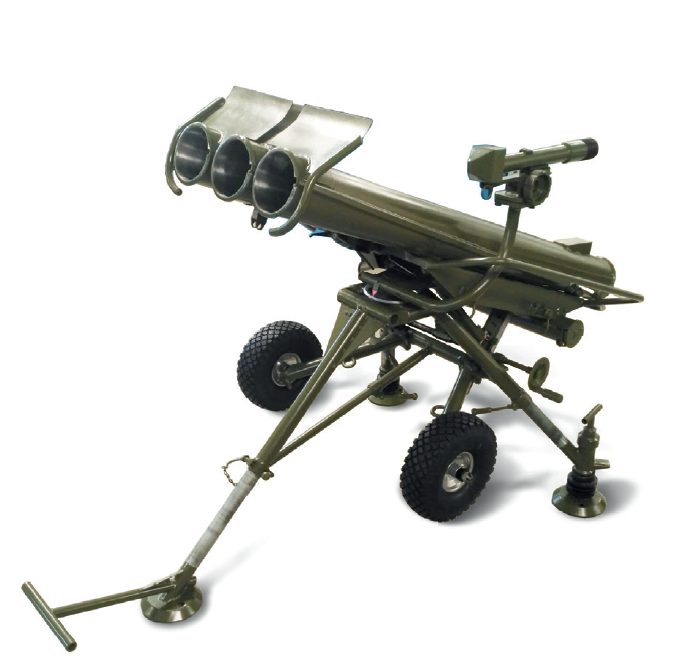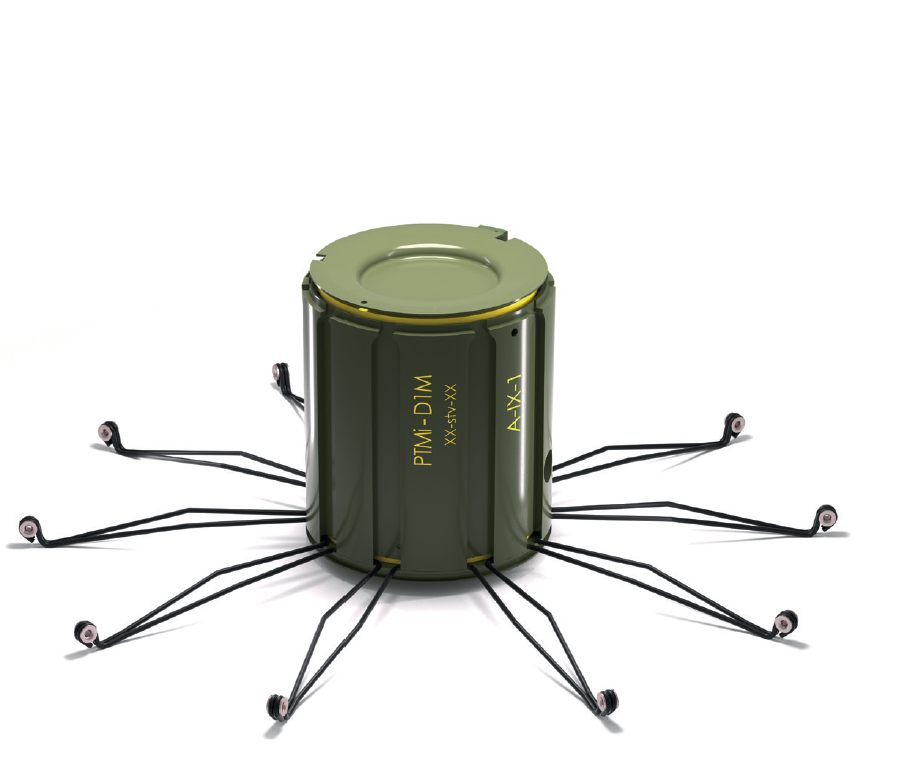CZDEFENCE MAGAZINE INTRODUCED A UNIQUE TACTICAL WEAPON SYSTEM OF REMOTE MINESWEEPING MANUFACTURED BY US.
13/03/2023 - CZDEFENCE magazine presented a unique tactical weapon system of remote minelaying manufactured by us. The MV-3 mine thrower is the only device in the Army of the Czech Republic designed to set up anti-tank minefields remotely. In less than two minutes, it is capable of minesweeping an area of 1 hectare and can reach a distance of up to 3 kilometres.
Excerpted from the article ...
Unique tactical weapon system in NATO armies. This is how our allied partners evaluate the remote minelaying system of the Czech manufacturer STV GROUP. The MV-3 mine thrower is the only device in the Czech army designed to set up anti-tank minefields remotely. In less than two minutes, it is capable of minesweeping an area of 1 hectare and can reach a distance of up to 3 kilometres. Only the 15th Engineer Regiment has the mine thrower in its armament. Specifically, it has 8 pieces in the Bechyně garrison, 8 pieces in the Olomouc garrison and one specimen is also used for training purposes by the Military Academy in Vyškov. The mine thrower can be fired either from the ground or from the loading area of the Tatra 810 and its operator consists of two people. The uniqueness of the system is mainly due to the modernized 122-KS ammunition.
The 122-KS Mine Launcher System is used to barricade a specific tactical location, such as a backbone road, pass or intersection. In this case, it is intended to stop, divert, or at least slow the enemy's advance. The system can be used effectively in its own controlled territory or in enemy territory, even in the vicinity of enemy units. "This capability is unique in NATO armies," says Capt. Jan Kuthan, commander of the 1st Task Group, describing the current role of mine throwers. The 1st Task Force is currently operating with this system in Latvia, where the main task of the Czech engineers is to inform coalition partners how to use the mine thrower system properly, what benefits it has and what the MV-3 can offer to all-military commanders. Commanders can then continue to count on and use this capability in their battle planning. The mine thrower is capable of both direct and indirect fire.


We were interested in how such a container missile with anti-tank mines works and how its production is carried out, so we visited the manufacturer of this ammunition, the company STV GROUP a.s., where the missile under the company name "Križná" was presented to us in detail.
The exact name of the ammunition is STŘELA 122-KS PTMi-D1M. It is a containerized anti-tank minelayer missile, the missiles are reactive propelled and equipped with a pyrotechnic timing fuse. Each containerised missile contains a total of 4 mines and up to 3 containerised missiles can then be fired in a salvo via the 122 mm MV-3 mine thrower. By adjusting the igniter, it is possible to ensure that the anti-tank mines are "ejected" from the missile container at a distance of 500-3000 metres, every 500 metres. However, the system is also capable of individual distance adjustment. A single volley from the MV-3 launcher, which fires 3 container missiles, is then capable of covering a square area of 100x100 meters with 12 mines. Two throwers are then capable of covering three square spaces, with the caveat that in order to provide an effective minefield density against enemy tanks and infantry fighting vehicles, 2 salvos (each from one thrower) should be fired into one target square, thus minesweeping the space with a total of 24 mines, which is more than sufficient mine density to effectively engage enemy armoured units.
The mining of space by means of container missiles has a strong psychological effect on the enemy, as the enemy first marks an area as "clear" on the basis of a reconnaissance of the forward units, but then the area is mined within moments and is essentially impassable. The primary objective of the mines is not to destroy the enemy machine completely, but just to immobilize it, stop the enemy advance, or bring fire support to the area. The individual mines leave the container missile at the required distance and fall to the ground via a parachute. After the mine hits the ground, the mine is positioned in a combat position in the field (via the automatically positioned feet of the positioning mechanism) and is immediately activated when it calibrates to the surrounding electromagnetic field. If the mine detects that the ambient electromagnetic field has changed or has been disturbed, the system evaluates that a target is approaching and the mine is initialized, which detonates the mine's top cover, under which the infrared sensor is located. The sensor is then activated when the vehicle passes over the mine and the detonation is delayed.
The upgraded mine contains smart electronics that react only to vehicles, not to people, where its initialization is based only on changes in magnetism and via an infrared emitter. Mines also have to have a self-destruct system according to the Ottawa Convention. The mine also contains an anti-handling system that detonates the mine should, for example, enemy engineers discover it and wish to deactivate it.
Interestingly, the original drawings of the container missile date back to 1984 or 1986, and in the 1990s the missile was introduced to the Czech Armed Forces, where it was supplied to the army regularly until 1997. Later, the production of the upgraded container missile with new electronics and sensors began, and in 2021 a contract was signed with the Ministry of Defence of the Czech Republic for the delivery of these missiles to the Czech Armed Forces for a total value of CZK 460,000,000 million. Hundreds of missiles are currently delivered to the Czech Armed Forces every year.
The production of the mine starts with the production of the electronic block, within which the installation of sensors, power supply, burners and other components takes place. The electronic block is then switched on in the mine body to protect the electronics when the mine is fired and landed, and the top of the mine is fitted with a protective cover. The mine is then fitted with a press-fitted and assembled charge consisting of the trigger body, the charge itself and the cap. The mine is sealed with a protective cover on which the sensor and pressure sensor are mounted. A slide with a detonator is welded into the hole in the mine and secured with a needle, the other end of which is attached to the parachute. A positioning mechanism is attached to the bottom of the mine, the legs of which are fixed with a steel cable with a pyrotechnic device attached after the lid and parachute are seated. After the positioning mechanism is fixed, a ring is fitted to the mine, into which the parachute is placed and covered with a spring-loaded cover. Everything is continuously checked and tested. The overall functionality of the finished mine is then checked several more times. The container is then loaded with 4 mines interconnected by a self-destruct cable, which is used to set the self-destruct time of each mine. After inserting the 4 linked mines into the container, a plunger is fitted to the last mine to sweep the mines out of the container at the desired sweep time set on the PČZ-22A to reach the correct minesweeping location between 500 m and 3000 m in 500 m increments. The container is closed with a hood which contains a connector for connecting the launcher and setting device. The container, thus assembled with 4 mines, is screwed onto the rocket motor. The PČZ-22A igniter is screwed into the hole in the hood in the secured position. The containerized KS PTMi-D1M missile is stenciled and placed in a box, which is closed and sealed with seals of the laboratory plant. The filled boxes of KS PTMi-D1M shall be placed on a pallet. The full pallet is sealed with steel cyclo tape and handed over to the finished goods warehouse for subsequent dispatch to the customer. It takes approximately eleven hours just for one containerized projectile to be laboratory tested.
Our soldiers operate the mine thrower directly from the field or from the loading area of the Tatra 810, but in the future STV GROUP a.s. intends to offer the army a mine thrower on a mobile platform, for example in the form of an off-road vehicle.
